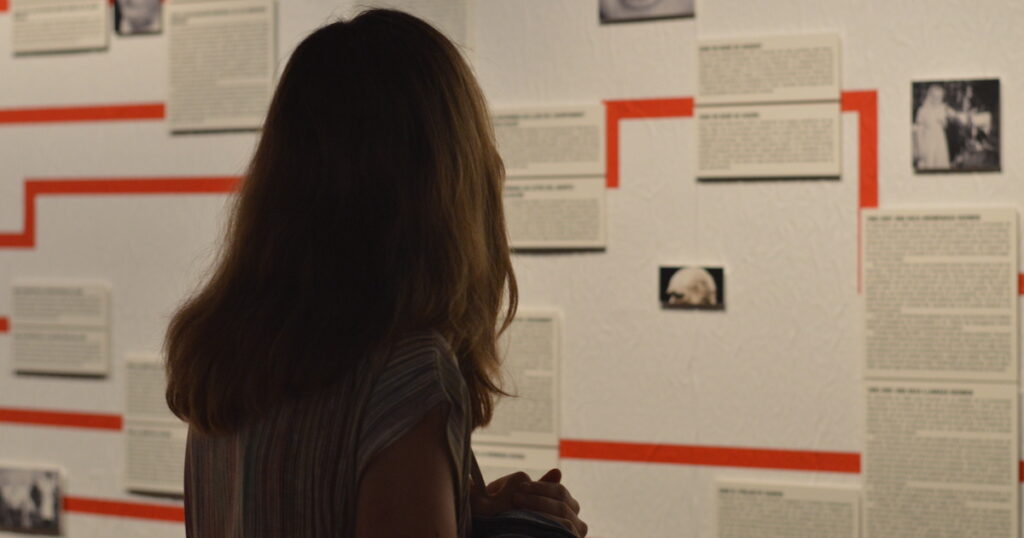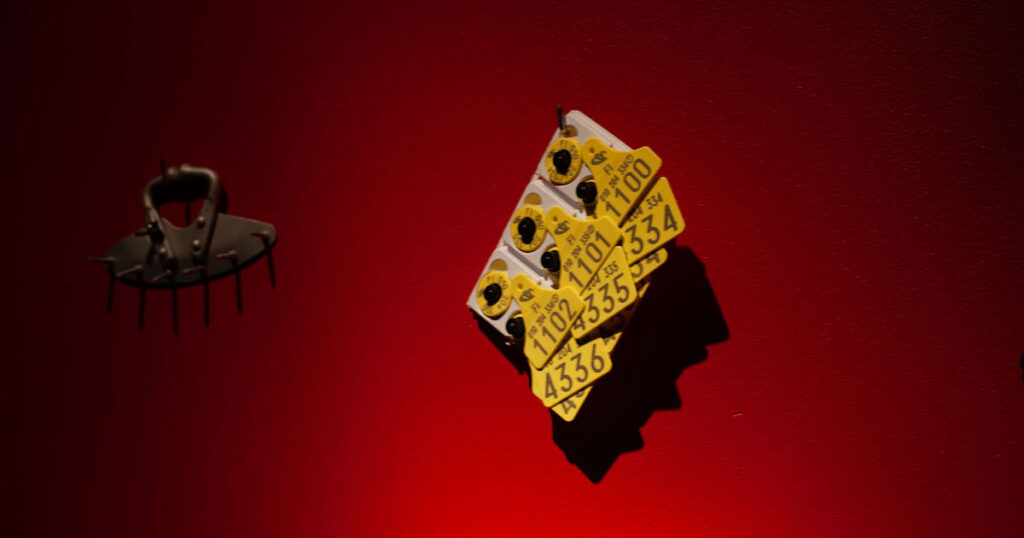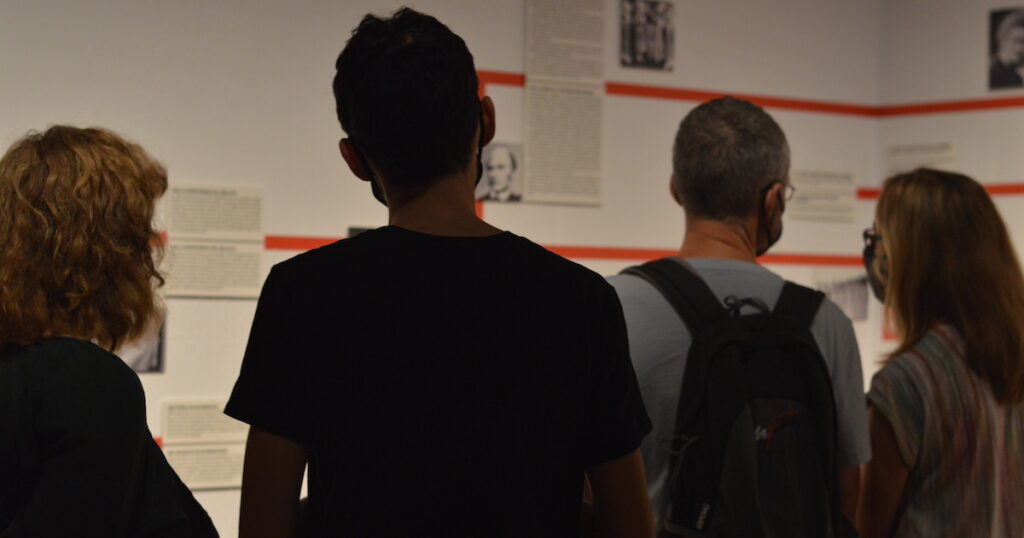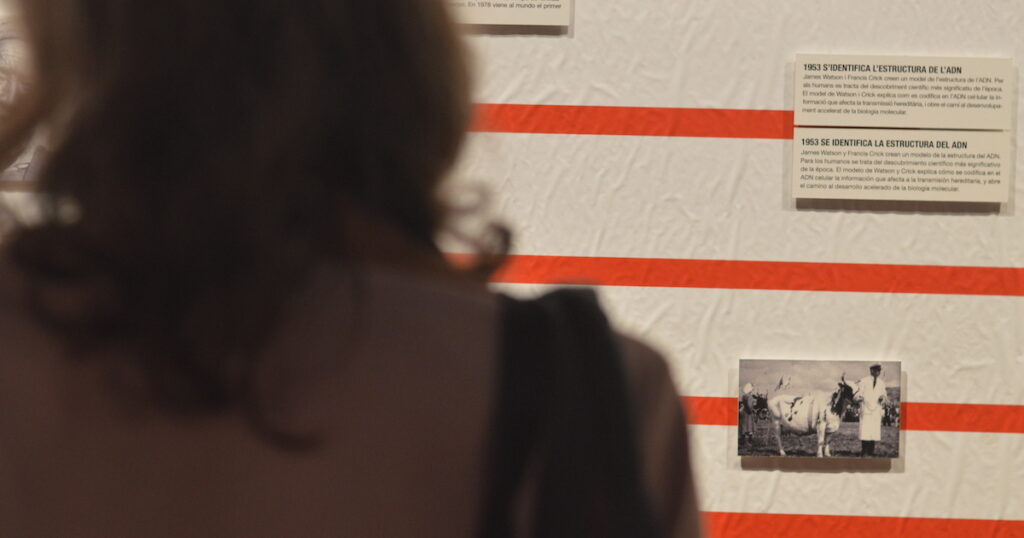News
How Tariffs Will Impact Farmers and Consumers
Policy•10 min read
Reported
The exhibit at the Museum of the History of Cattle, currently on display in Barcelona, "introduces the shared history of cattle and humans as seen by the cattle."


Words by Gabriela Martins Dias
Sperm straws are displayed side by side, distinguished by five different colors. Typically used by the livestock industry, the straws might not provoke any emotion or deep thought at first sight. Yet the accompanying labels reveal much more than simple inanimate objects. The first of the texts, for instance, refers to the orange tubes, which generated the life of a calf. It says that the individual was born on a dairy farm, weaned during his first day, and that his life expectancy was not much more than a few weeks. The product? “Better grade leather, meat.”
The piece, titled “The Fates of Cattle”, is placed among others in a sample from The Museum of the History of Cattle, in the Centre de Cultura Contemporània de Barcelona (CCCB), Spain, until November 28. The original version of the exhibition took place in Helsinki, Finland in 2013, and part of it has also traveled to Germany. Its creators are Terike Haapoja and Laura Gustafsson, who teamed up because of their common view of other species. Both of them see nonhuman animals as complex individuals that are highly affected by existing power structures. In order to raise awareness about their history and experiences, the artists had the idea of creating “The Museum of Others.” As addressing all nonhuman species would be impossible, they narrowed the idea down to approaching the lives of cattle.
“We chose cattle when we started thinking of what is called history, which is the time of written texts,” explains Laura. Different groups of humans started to write at the same time that they started cultivating the land. As they needed more force to mold the soil, and manure to fertilize the ground, they started using bovines. Laura states that even though most people do not recognize it, these nonhuman animals had a very important role in constructing the society we know today—whether we consider it good or bad. The two artists thought it was important “to look at human history, especially Western history, from the bovine perspective, showing that there are other ways of experiencing the events we know.”

The Museum of the History of Cattle is divided into three main parts. “The Time Before History” explores the period in which it was possible for indigenous cattle to run free. In this space, hoofprints and plants work together to compose the atmosphere. In the following “Historical Period,” the artists approach human technology. A board displays a timeline of different events showing “how breeding and eugenics coexisted and were also related,” as Laura describes. “The Ahistorical Period,” partly simultaneous with the second, addresses industrialization. Tools of control from the livestock industry are exhibited, like the spikes humans put on calves’ noses so that they cannot suck their mothers’ milk. Laura explains that she and Terike wanted to show that previously independent animals were prevented from passing their knowledge to other generations due to human will. “And now the bovines cannot have any kind of history anymore.”


Neither Laura nor Terike could ever share the experiences of cattle, and in fact they have never had close relationships with cows. Creating the museum thus depended on research, but also on art and imagination. They chose to explore the human concepts of history and language in order to try and communicate to their own species. The main idea was to guarantee a space in which the audience could put dominant worldviews into perspective. As Laura clarifies, “the intent was not to say that this is how bovines think, but to look at us from the outside.” Along with Terike, she looked for visual and verbal features that cattle might have accepted. Laura explains that, in Finnish, there is a single word for “tongue” and “language,” which is “kieli.” Through the kieli, the tongue, cattle usually touch each other; through the kieli, the language, the artists wanted to touch the public. They show violent instruments, but also search for a gentle tone and express a little irony, as they imagine bovines would do if they were to tell their stories.
The process of research was not just about the lives of bovines, but also about what it means to build a museum. The two artists believe that there is a utopian aspect behind this kind of medium. “The installation is not really the artwork, but the performance of how people attend to it and make the content real,” says Laura. They see exhibitions as lived experiences that allow people to think critically about reality. This conception is very different from other museums that depict nonhuman animals. The AKC Museum of the Dog in the United States and the Schweine Museum in Germany are examples that focus on the external features of other species or their instrumental use to humans. The same happens at natural history museums, says Laura, “they show the specimen, for instance, the giraffe; and then she represents all the giraffes in the world.” For the authors of The Museum of The History of Cattle, this approach is violent, since nonhuman animals are unique beings that have stories.

According to Laura, the stereotypical representations of nonhuman animals share roots with other oppressions. She understands that Western society has created an ideological distinction between humans and animals that implies the former are superior to the latter. But she points out, “these categories are not biological, because humans are also animals.” Employing this standard of what it means to be inferior, human minorities are animalized. As a consequence, “all these populations are treated as things, as individuals that can be owned,” she adds. So, when designing the museum, Laura and Terike also aimed to reflect on who defines these concepts: the dominant in society, who are often human, white, and male. Also, she states that these relationships cannot be thought about without tackling the world of money. “When exploiting nonhumans, nature, immigrants, female bodies, there is always economic interest behind [it].”
Thinking of power structures can be “quite depressing,” according to Laura. But for these artists, questioning them should be the main purpose when looking for a better world. And among other initiatives, museums and exhibitions can be a powerful medium. After the Museum of the History of Cattle, Laura and Terike have launched The Museum of Nonhumanity and other projects together. Laura describes their work as advocacy for nonhuman animals through the production of knowledge. And they will keep on building what they call “parallel universes”—spaces that recreate the past, construct presents and allow people to reimagine the future. For the artists, it is important to keep spreading the idea that our fate is not sealed; we can always make decisions and promote change.